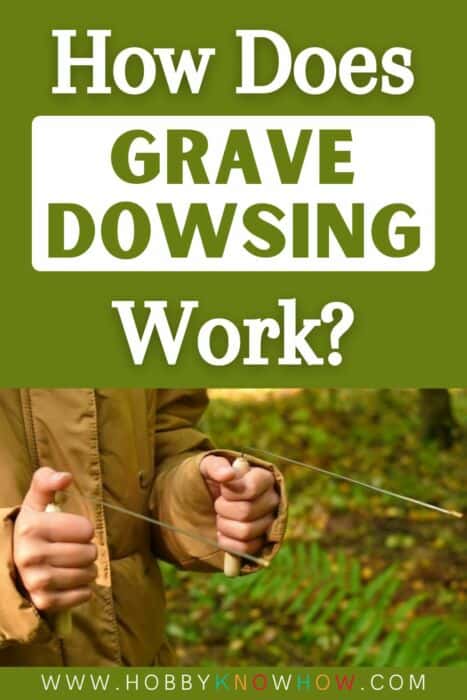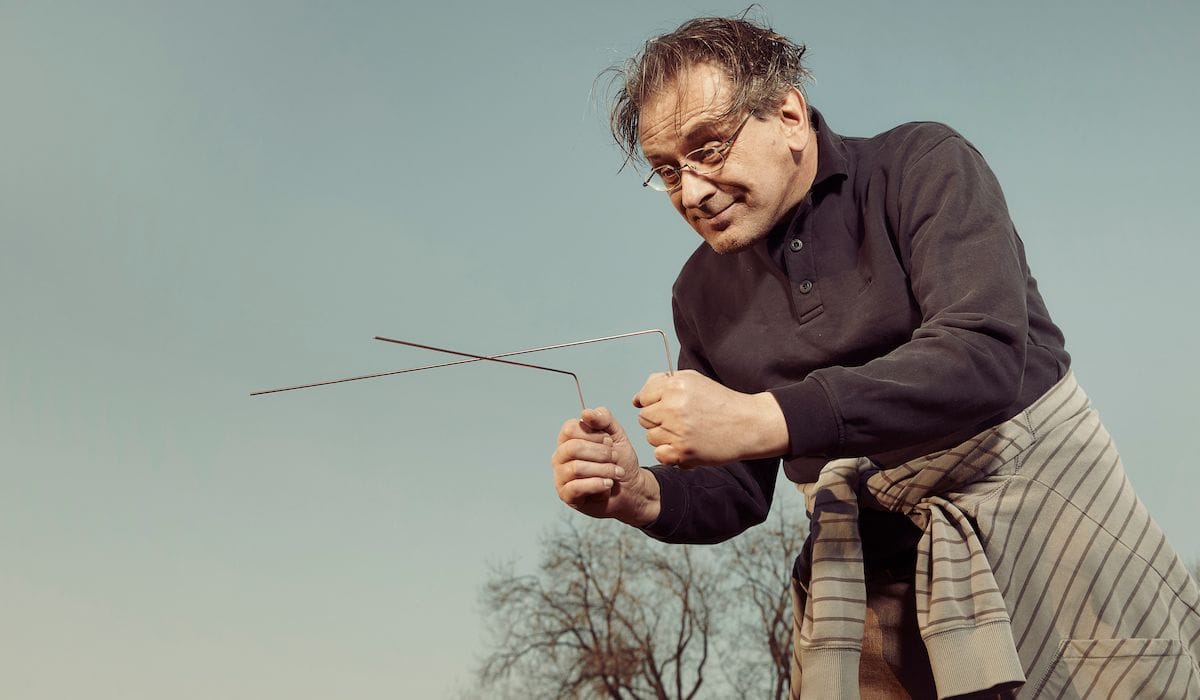Dowsing has been used traditionally for an expanding number of things. Water, of course, is one that we are all familiar with. People have also used it for treasure hunting or even finding electrical lines. You may have heard also about another kind.
How does grave dowsing work?
Grave dowsing works like regular dowsing, though it has some of its own techniques that are recommended by many sources. Today we’ll discuss grave dowsing and give you a little more information on how it is done, including equipment and techniques, to give you a clear grasp on the basics of this art.
Does it require a special set of dowsing rods?
First off, grave dowsing does require any special dowsing rods. While some practitioners are very particular about their rods, using special woods such as hazel or willow wood, or only using magnetic or non-magnetic metals, for grave dowsing the choice of rods is up to you.

You can simply go with the old wire-hanger method, creating two rods from a 36 inch hanger, with a bend to make an L-shaped handle and fits your grip (usually around 4 inches) or simply use pvc rods. Whatever you like. The important part is that you are comfortable and familiarize yourself with the techniques.
Understand that the information you can determine is limited
Grave dowsing can help you to locate unmarked graves, for instance if you believe an ancestor is buried in a part of an old cemetery that now looks bare, then you might be able to determine if people are buried there in unmarked graves. Beyond this, two other popular techniques claim to tell you the following:
- The rough age of someone buried in a particular location
- The likely gender of the person buried there
Let’s explore how this is supposed to be done.
Finding an unmarked cemetery with dowsing
If you believe that a plot of land used to be a cemetery and want to determine this with grave dowsing then it is done very much like traditional dowsing. Walking slowly, with your dowsing rods in front of you, you watch for them to cross.
This indicates that a grave is underneath and the rods should uncross when keep walking and are no longer on top of it.
Further, consider the type of graveyard that you are looking for. If it’s a Christian burial ground, bodies were typically buried with the head facing the west and the feet facing the east.
These burials were typically spaced with 2 -3 feet in between them.
By walking a large area and marking locations with something, such as coins or poker chips, then you can get an idea if you are looking at a site with symmetrical burials.
This lets you know if it is only one grave or perhaps an unmarked cemetery section. While dowsing may also find animal bodies and there is the consideration of different religio-cultural burial practices, we’ll keep this simple just to expound the basic techniques.
Determining the rough age of the person buried there
By taking paced steps to determine where the body is supposedly buried, taking small steps can give you a rough measurement.
This lets you know a rough age of the person, though it is limited to determining if it is the grave of an infant, child, or an adult and won’t factor any growth abnormalities – it’s useful, but basic. Commonly this is what is used:
- 1 – 3 steps – Only 1 step indicates an infant, 2 – 3 for a Toddler
- 4 steps – indicates an older Child
- 5, 6, or 7 steps – Adolescent (or short adult), average-sized Adult, or a very tall adult
How to determine the gender of the person buried there?
One technique which is quite simple is in use by a number of Grave Dowsers and requires the following steps:
- Stand over the middle of the site that you suspect is hosting the remains
- Using only 1 of your dowsing rods, balance the handle on the tip of your index finger with the rod pointing downward.
- The rod should begin lightly moving in a circle, rotating clockwise to indicate that the remains are female or counterclockwise if they are from a male.
Be sure to go over the entire grave this way. A change in gender in one location could be an example of a mother buried with a male infant, for instance.

Practice, practice, practice!
While these are but a few of the techniques which are out there, they give you an idea of how grave dowsing works as well as some techniques which can get you started.
The easiest practice is simply an old cemetery where you can test location, approximate age, and gender determination by simply not reading the stones until you check later.
By using an old cemetery there is much less a chance of anyone getting angry at your visit but some colored flowers could also be used to help you to practice while being respectful.
Just associate particular colors with age ranges and genders and in the end you have a colorful way to check your findings and you’ve left flowers out of respect as well.
Now you know how grave dowsing works and what happens next is up to you!




